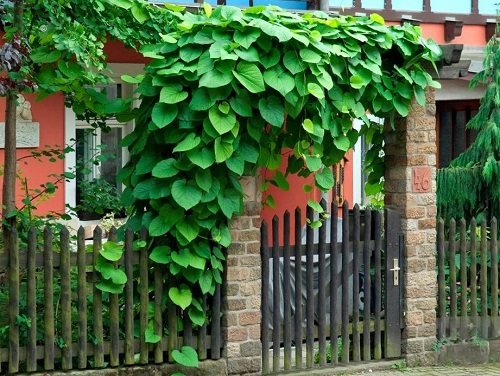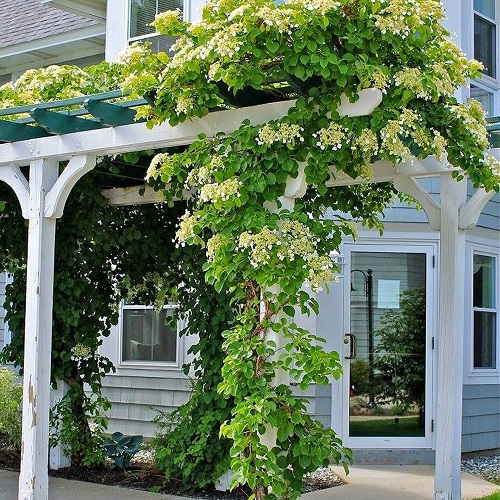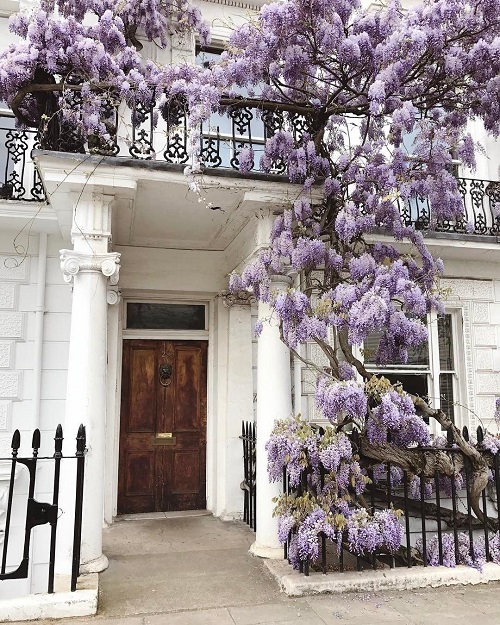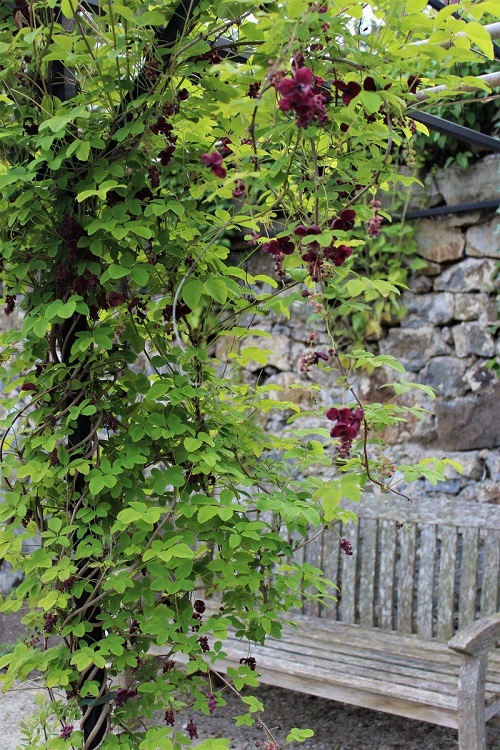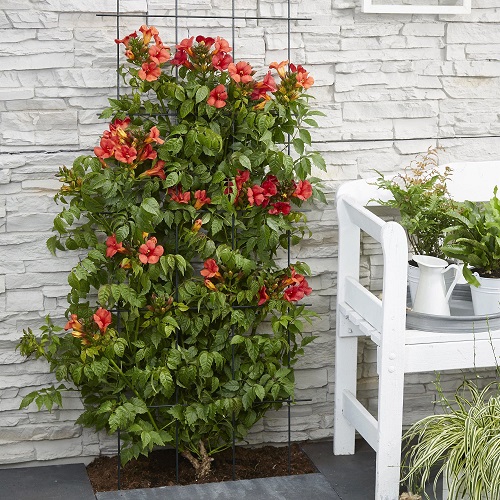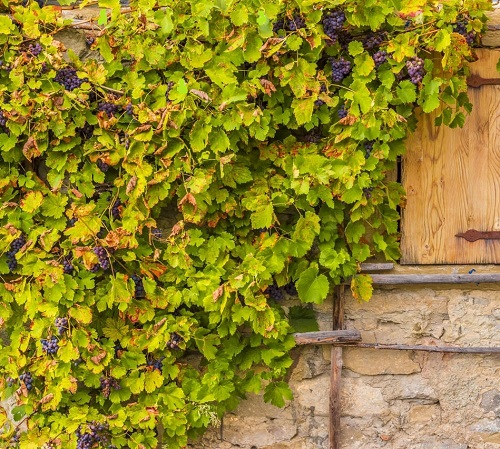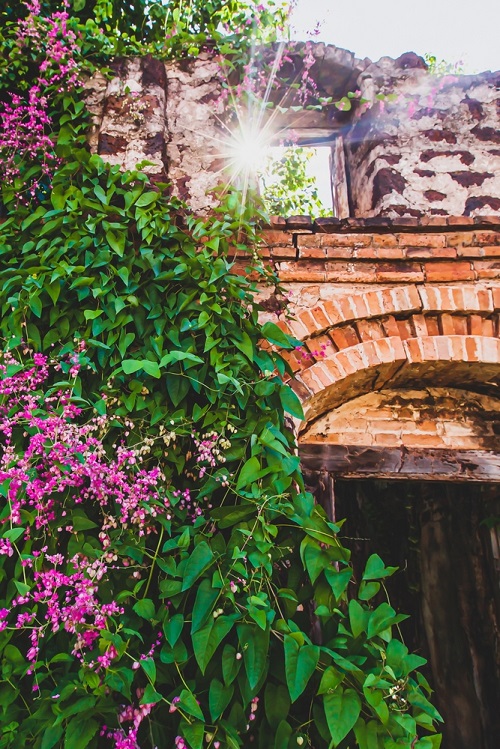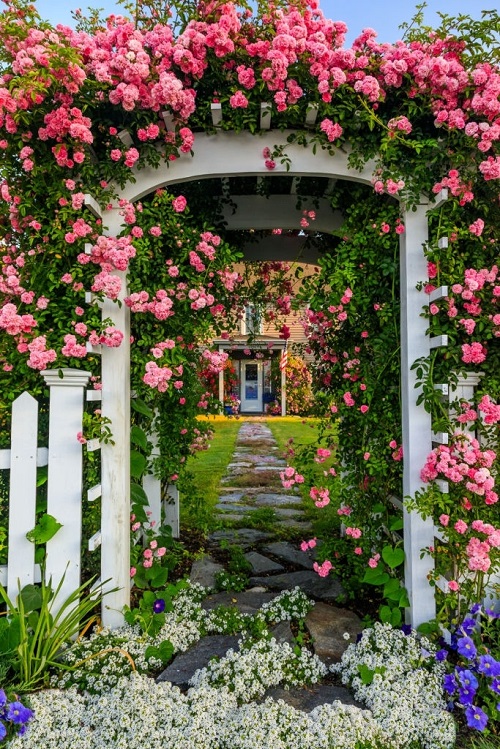Having plants in your landscape is always a good idea to enhance the appeal! Here are some of the Best Perennial Vines you can grow!
Vines are the best way to transform the look of your dull walls and landscapes! They last for decades and get more beautiful each year! Here are some of the Best Perennial Vines for new as well as experienced gardeners!
Check out Some of the Best Vines for Shade Here!
1. Arctic Beauty
USDA Zones: 3-8
Botanical Name: Actinidia kolomikta
Length: 15-20 feet
Arctic Beauty grows beautiful and fragrant white flowers at the start of summer. The plant also produces grape-sized, kiwi like sweet fruits. Not only flowers, but the foliage of these vines is attractive as well, with heart-shaped leaves, having pink and white splashes.
2. Honeysuckle
USDA Zones: 4-9
Botanical Name: Lonicera (Genus)
Length: 20-30 feet
Honeysuckles thrive in well-drained soil and are one of the best Best Perennial Vines. The flowers are clustered and tubular, with sweet fragrance. Its nectar attracts butterflies, bees, and hummingbirds. Colors of the flowers vary from yellow, white, and bright red.
3. Dutchman’s Pipe
USDA Zones: 5-8
Botanical Name: Aristolochia macrophylla
Length: 10-25 feet
Dutchman’s Pipe flowers in summer, resembling a smoking pipe with a heart-shaped opening, hence the name. Petals are fused to form a tube and have a creamy color with many purple or red blotches.
Fun fact: They produce an odor similar to rotten meat, which attracts flies, helping in pollination.
4. English Ivy

USDA Zones: 5-11
Botanical Name: Hedera helix
Length: 60-80 feet
English ivy provides lush green foliage throughout the year. Keep in mind that they are a slow beginner and will start to flourish after around 2-3 years. You can also grow them in hanging baskets to keep their length in check.
5. Climbing Hydrangea
USDA Zones: 4-9
Botanical Name: Hydrangea petiolaris
Length: 30-50 feet
Climbing hydrangea does not require much maintenance once they are established. They produce beautiful clusters of fragrant white flowers that look stunning against green foliage. These vines grow well in both shady and sunny regions.
Check Out Our Article on Landscaping with Hydrangeas here!
6. American Bittersweet
USDA Zones: 3-8
Botanical Name: Celastrus scandens
Length: 20-30 feet
Bittersweet vines are native to North America and thrive in most of the United States. These vines grow yellow-green flowers that later produce attractive and edible, orange-yellow berries. It is one of the best Best Perennial Vines you can grow!
7. Perennial Sweet Pea

USDA Zones: 5-9
Botanical Name: Lathyrus latifolius
Length: 6-10 feet
Perennial sweet pea is one of the most easily grown perennials and can grow up to 6-8 feet high with proper support. It thrives in full to part sun and requires fertile, moist, and well-draining soil to grow. The flowers resemble a butterfly, featuring colorful shades of white, purple and deep rose pink, with a strong heady, honey-like aroma.
8. Wisteria
USDA Zones: 5-9
Botanical Name: Wisteria (Genus)
Length: 25-30 feet
Looking quite attractive with its drooping flowers of vibrant purple color, Wisteria offers a delightful fragrance as well! Plant it at an area that receives full as it is not going to flower in the shade. Also, provide enough space as it grows quickly.
9. Star Jasmine
USDA Zones: 7-10
Botanical Name: Trachelospermum jasminoides
Length: 25-30 feet
Star jasmine produces highly aromatic white flowers that attract bees and butterflies. They can grow in a variety of soil and prefer full sun but can thrive in shady areas as well. You can train them to climb over a trellis or a round arch.
10. Passion Flower Vine
USDA Zones: 7-10
Botanical Name: Passiflora edulis
Length: 10-30 feet
Passion fruits thrive in subtropical regions in hot climatic conditions and full sun. This vine takes around 1 to 2 years to reach the fruiting size. They are best suited to grow over trellis, wire fence, or over shady walkways. It has large, purple, and white flowers, which look very appealing.
Fun Fact: Its fruits are purple-black in color, rich in antioxidants, vitamins, and minerals.
11. Akebia
USDA Zones: 5-6
Botanical Name: Akebia quinata
Length: 15-40 feet
Akebia is also commonly known as five leaf vine or chocolate vine, due to its chocolaty fragrance. The vibrant, purplish-brown flowers look beautiful against the green foliage backdrop. It has an excellent growth rate, so they are best suited as cover for archways, pergolas or trellises.
12. Morning Glory
USDA Zones: 2-11
Botanical Name: Ipomoea purpurea
Length: 7-10 feet
Ipomoea genus has many other ornamental species that are known as morning glory, but one of the most famous is Ipomoea purpurea. It grows best in temperature above 45 F (7 C) and has heavenly blue flowers that turn to purple. This vine is available in other colors like red, white, and bi-color.
13. Golden Hops
USDA Zones: 4-8
Botanical Name: Humulus lupulus
Length: 15-25 feet
This vigorously growing vine is used widely for preserving and flavoring beer, with golden-green foliage, which later turns to lime green, it looks so attractive. Golden Hops produces pine-scented, cone-shaped spikes in the fall. It is drought tolerant and requires average watering.
14. Trumpet Vine

USDA Zones: 4-10
Botanical Name: Campsis radicans
Length: 8-20 feet
Trumpet vines or trumpet creepers are fast-growing vines, bearing tubular flowers that resemble the musical instrument trumpet. Colors of these flowers range from yellow to orange or red, which turn to bean-like seedpods. They can thrive in both shady as well as sunny spots.
15. Common Alamanda

USDA Zones: 10-11
Botanical Name: Allamanda cathartica
Length: 20 feet or more
Native to Brazil, Common allamanda also goes with the name golden trumpet. It prefers only warm and humid climatic conditions. The plant doesn’t do well in harsh winters. Its flowers are golden-yellow with white throat markings that look quite spectacular, making it one of the Best Perennial Vines you can grow!
16. Common Jasmine

USDA Zones: 7-10
Botanical Name: Jasminum officinale
Length: 8-20 feet
Known for the intense, intoxicating fragrance, jasmine is the national flower of Pakistan and native to the Indian subcontinent and China. This perennial vine grows best in the warm climate and needs no introduction.
17. Grapevine
USDA Zones: 6-10
Botanical Name: Vitis vinifera
Length: 25-40 feet
Grapevine is an appealing ornamental perennial, that yields delicious grapes, thereby turning your garden in an edible landscape! It prefers to grow in well-drained, fertile soil and nourish in full to partial sunlight. Its growth rate is rapid, however, with regular pruning, you can control it.
Want to Grow Grapes in Containers? Click Here!
18. Clematis
USDA Zones: 4-9
Botanical Name: Clematis (Genus)
Length: 8-20 feet
The clematis genus has many amazing perennial vine species for every climate, which are perfect for both sun and shade. Growing them is easy, too, as its varieties can withstand the harsh cold of zone 3 and damaging heat of zone 11.
19. Periwinkle
USDA Zones: 4-8
Botanical Name: Vinca Minor
Length: 1-2 feet
Commonly known as Lady’s Winkle, Running Myrtle, and Wintergreen, Periwinkle is a low maintenance perennial creeper. Native to European Countries and Southern Russia, it flourishes colorful flowers in beautiful shades of blue, purple, white, and lavender.
20. Virginia Creeper

USDA Zones: 3-9
Botanical Name: Parthenocissus quinquefolia
Length: 20-50 feet
Virginia Creeper is an invasive deciduous perennial vine and flowers in a mix color of green and white. It is native to the East and Western parts of the United States, featuring finely pointed green leaves, which turn to crimson when the winter season arrives.
Fun Fact: Birds and butterflies love to flutter around it!
21. Tropical Bleeding Heart
USDA Zones: 9-11
Botanical Name: Clerodendrum
Length: 10-15 feet
Clerodendrum has some amazing species, whether it’s spectacular Clerodendrum splendens or rare Clerodendrum speciosum. You can easily train them to grow around a trellis or any other support also.
22. Climbing Rose
USDA Zones: 5-9
Botanical Name: Rosa ‘Dortmund’
Length: 15-30 feet
No plant can be as spectacular and vibrant as the climbing rose! With dramatic red flowers on display along with the contrasting foliage, it creates quite a show! Just be careful with the thorns!
23. Boston Ivy
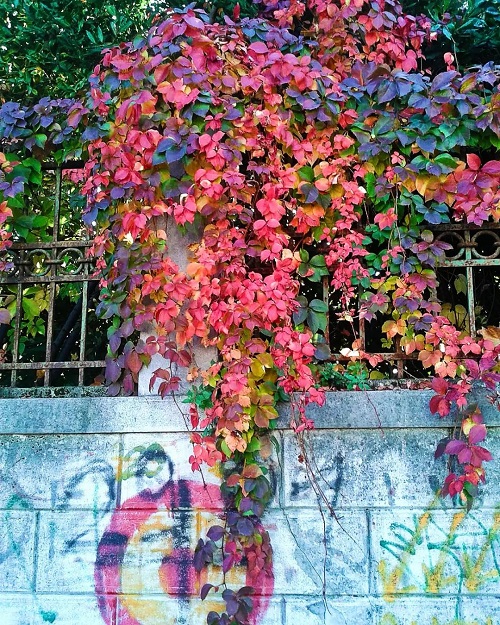
USDA Zones: 3-9
Botanical Name: Parthenocissus tricuspidata
Length: 25-50 feet
You are surely going to appreciate your decision to grow Boston ivy in Autumn! The stunning display of its three-pronged foliage changes the colors towards the season’s end, which makes it look spectacular! It is easy to grow and also bears fruits!
24. ‘Tangerine Beauty’ Crossvine

USDA Zones: 5-9
Botanical Name: Bignonia capreolata ‘Tangerine Beauty’
Length: 30 feet long
The delightful orange trumpet flowers emit a delightful fragrance, attracting hummingbirds during their appearances in both spring and fall. For optimal growth in warmer areas, it is recommended to provide robust support for this resilient vine. Consider utilizing a sturdy lumber trellis, a pergola, or a privacy fence. These vines thrive in Zones 5 to 9 and remain evergreen in the warmest zones. However, in Zone 5, they may experience winter die-off and regrow from the ground in the following season.
25. Carolina Jessamine

USDA Zones: 7-11
Botanical Name: Gelsemium sempervirens
Length: 20 feet long
In the warmest zones, the enchanting golden blooms, imbued with a sweet fragrance, begin to grace the evergreen foliage during late winter and carry on their captivating display into spring. In other regions, anticipate the arrival of these flowers in spring, with the potential for a second blooming in the fall. To enhance your landscape, consider cultivating this vine on a pergola, trellis, or gazebo. Additionally, its graceful appearance cascading over a fence adds a touch of elegance to any setting.



